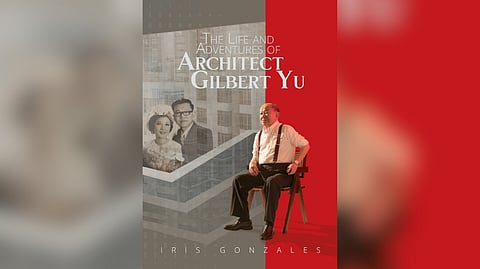
- NEWS
- the EDIT
- COMMENTARY
- BUSINESS
- LIFE
- SHOW
- ACTION
- GLOBAL GOALS
- SNAPS
- DYARYO TIRADA
- MORE

Inspiring the next generation of architects with hard-earned wisdom drawn from over three decades in the industry is the aim of the memoir of revered architect and developer Gilbert Yu.
Known for his pioneering iconic projects, Yu distills his experience into essential lessons for future practitioners.
Yu sums up the lessons in his biography The Life and Adventures of Architect Gilbert Yu, written by award-winning journalist Iris Gonzales.
The book tells the inspiring journey of a young man who dared to dream and persevered through life’s challenges to achieve those dreams.
It offers an inside and intimate look at an extraordinary success story that began with the most humble of beginnings.
A Filipino-Chinese born and raised in Manila, Yu would become not just one of the country’s most prominent and successful architects of his time, but also an enduring pillar of Philippine architecture.
Timeless blueprint
His story is a timeless blueprint for triumph, shared prosperity, and lasting success.
Some lessons he wanted to impart to architects:
Lesson 1: Architecture goes beyond design
“Architecture is not just about designing structures — it’s about building lives,” Yu said. “Every structure must have purpose, be designed with excellence, and built for permanence.”
Lesson 2: Architects must be knowledgeable in business
Yu believes architects should understand property value, project feasibility, and market trends to ensure success. “Architects must also be development consultants, not just technical people,” he noted, urging schools to integrate business and entrepreneurship into architectural education.
Lesson 3: Architects must be forward-thinking
Designs should anticipate shifts in landscapes, lifestyles, and technology, enabling structures to stand the test of time.
Yu’s philosophy can be summed up in his personal mantra: “Zero plus zero plus zero equals 100.”
Starting with no knowledge, no experience and no resources, he built a thriving career and landmark projects through determination and resilience.
“A project starts from zero before becoming an iconic landmark,” Yu said. “With vision and dedication, architects can transform the impossible into reality.”
